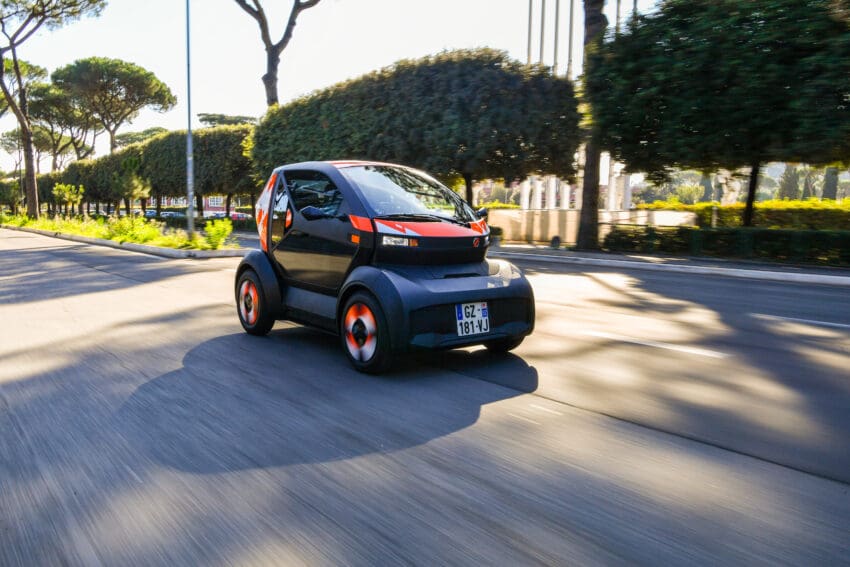Mobilize Duo review: Twizy successor shows city smarts
Renault’s rival to the Citroen Ami looks to meet demand for small, cheap urban transport, with £10k price tag and 100-mile range
The Mobilize Duo is the latest in a growing list of electric ‘mobility solutions’ looking to provide a new method of city centre travel.
As congestion and pollution get worse and regulations get tighter, electrification has opened the door to a new idea of what urban personal transport can look like. It’s no longer a simple choice between a scooter or a full-size car. There’s room for something in between. Something with a tiny physical and environmental footprint but some of the comfort and protection of a ‘proper’ car.
The Citroen Ami is probably the most famous of these sub-450kg quadricycles but other models such as the Carver, Microlino, Silence S04 and Ark Zero also slot into the space between two-wheeled bikes and ‘real’ cars.
And now Mobilize is joining the fray with the Duo and van-like Bento, both of which fit the L7e quadricycle category with a tiny kerbweight and 2.43m by 1.3m footprint. For reference, that means the whole Duo would fit between the wheels of a Renault Clio.
Backed by the might of Renault, Mobilize has taken the basic principle of the famous but flawed Twizy and sent 10,000 volts through it to create a more modern and capable vehicle that shares just 10% of its parts with the old one.
Mobilize Duo design, interior and technology
It is easy to see some similarities between the Duo and the Twizy thanks to the pronounced bumpers and wheel arches with the body sitting almost like a drop-in pod in the middle.
It looks like a cyberpunk roller skate, an impression emphasised by the angular body lines and vivid colour highlights on the upper body panels. Unlike the Twizy, there are proper doors but they’re still unconventional — opening up and forward and featuring huge glazed portions above and below the central panel. Not only does this look cool and aid visibility, it also means access is easy, even in tight spaces.
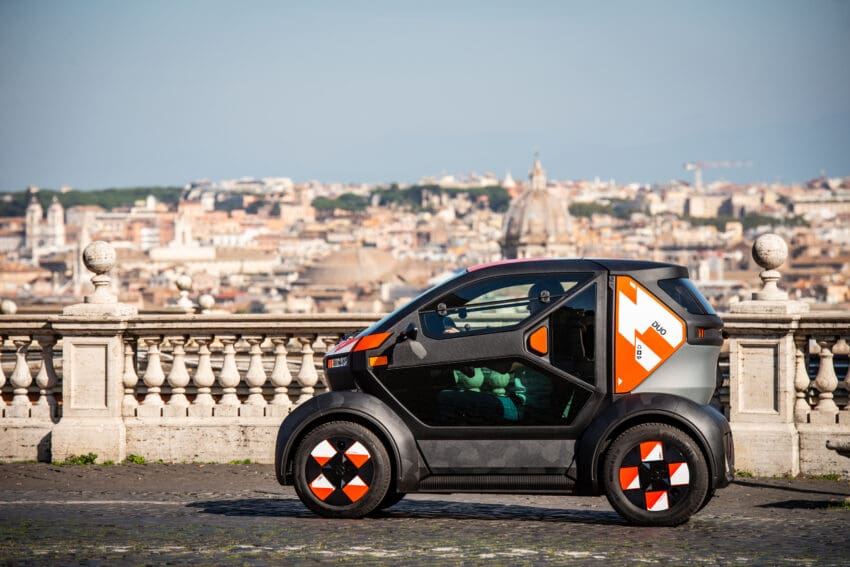
Like Henry Ford never said, you can have your Duo in any colour as long as it’s black. Part of its simplicity is that every version is finished in black plastic. Not only does this save production costs but it also features a ‘camouflage’ grain to hide the inevitable scrapes an urban vehicle picks up. You can, however, brighten the exterior with colour packs for the upper panels.
Around 40% of the Duo’s bodywork is made from recycled materials, including elements taken from end-of-life vehicles. According to Mobilize this and the renewable energy powering its Tunisian factory means Duo production generates 66% fewer greenhouse gases than that of an A-segment hatchback. And at the end of its life, at least 95% of the Duo will be recyclable.
Like the Ami, the Duo uses the same panels in multiple places, such as the bumpers and rocker panels, for a simpler, cheaper construction that uses five times fewer elements than a regular car.
Also like the Ami, a lot of the cabin is built from scratchy black plastic (again from recycled sources) and the feeling is functional rather than fancy. But, as with the exterior, colour packs bring a splash of character, especially to the ‘boombox’ dashboard, which, with the Orange pack, looks like it has been wrapped in high-voltage warning stickers.
This bold dashboard is a step up from the Ami’s. It features a central instrument display along with clever numbered banks of buttons that arrange controls in order of priority. It also comes with Bluetooth and phone mount as standard and the option of a proper dash-mounted air conditioning system rather than the Ami’s single-speed fan.
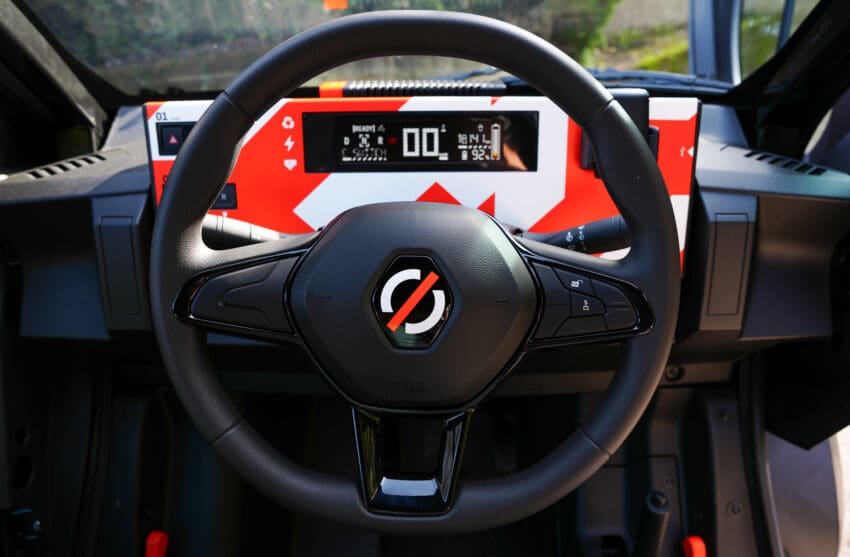
Continuing the sustainable theme, the seat fabric is made from TEP fabric that can be wiped or even hosed down thanks to drain holes in the floor. The seat itself is hard plastic with a thin foam topper and while it slides, the back rest doesn’t adjust. The firm foam padding on the seat is surprisingly comfortable even after a couple of hours at the wheel and there’s decent space for an average driver.
But there’s a tall person caveat. Anyone over 6’ 2” will struggle for leg and headroom, making the Ami a more attractive prospect. And the rear seat requires some gymnastics to access and then asks your passenger to sit with their knees around their ears or their legs spread uncomfortably around the front seat, unlike the Ami, which provides plenty of passenger space.
The Duo also falls down on the practicality front — aside from a phone holder there is no storage, not even a cupholder, while the Ami has a host of cabin cubby spaces.
For commercial customers, the Bento ditches the rear seat and plonks a massive cargo box on the back. This leaves a small luggage space behind the front seat and up to 649 litres of load capacity in the Bento box. The plastic hamper can be configured as anything from a simple box to a rack-equipped mobile workshop or insulated cool box, offering scope for any number of business uses.
Battery, motor and performance
Rather than go to the expense of developing an all-new motor and battery, Mobilize has raided the Renault parts bin for the Duo. The 21bhp motor is the electric drive unit from the Austral hybrid and the battery is a single 10.3kWh module from the Renault 5’s larger array.
The motor means the 508kg Duo (including batteries) can buzz around at urban speeds with ease. And it’ll reach 50mph, meaning that it can venture out of the city, unlike the Ami.
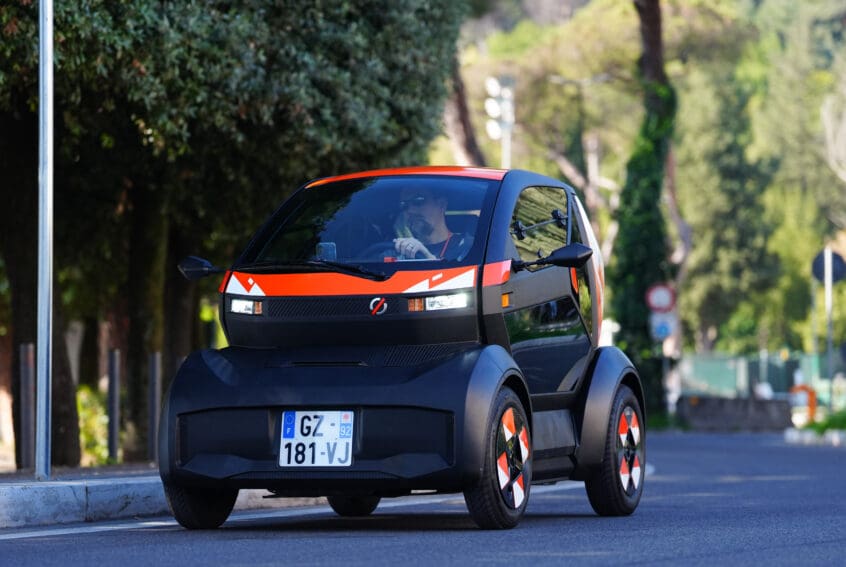
The battery should be good for 100 miles of motoring in a purely urban setting — more than enough for most daily use — and can be charged from 0-100% in a couple of hours via 7kW Type 2 connection. The Bento, with its less aerodynamic shape, manages 87 miles on a charge. Unusually for the class, Mobilize is giving an eight-year, 50,000-mile warranty on the battery.
Our test drive was in the suitably crowded and chaotic centre of Rome, where driving like a local — darting into tiny gaps one moment, gently insinuating your way across multiple lanes of traffic the next — showcased the Duo’s strengths. Its short length and narrow track mean you can weave through spaces that thwart larger cars, and there’s enough instant response from the motor to exploit any small opportunity to make progress.
It seems odd to talk about steering weight and throttle calibration in something designed to do 20mph around city centres but it’s one of the areas where the Duo really succeeds. The steering is power assisted (unlike the Ami) but isn’t overly light, so you get a proper feel for the vehicle as you carve through traffic. And the throttle and braking regen are nicely balanced for the constantly changing speed of urban driving. It doesn’t have a full one-pedal function but in the crawl-accelerate-crawl cycle that typifies city driving it comes pretty close.
It also rides respectably — certainly far better than the jarring Ami. It still has a brittleness that a ‘proper’ car would smooth out, but it acquitted itself acceptably across some of the most varied and challenging urban surfaces I’ve ever encountered.
It does lose some credibility, however, due to tiny wing mirrors and a substantial amount of bodywork that blocks over-the-shoulder vision. Both of which make keeping track of traffic around you harder than I would like.
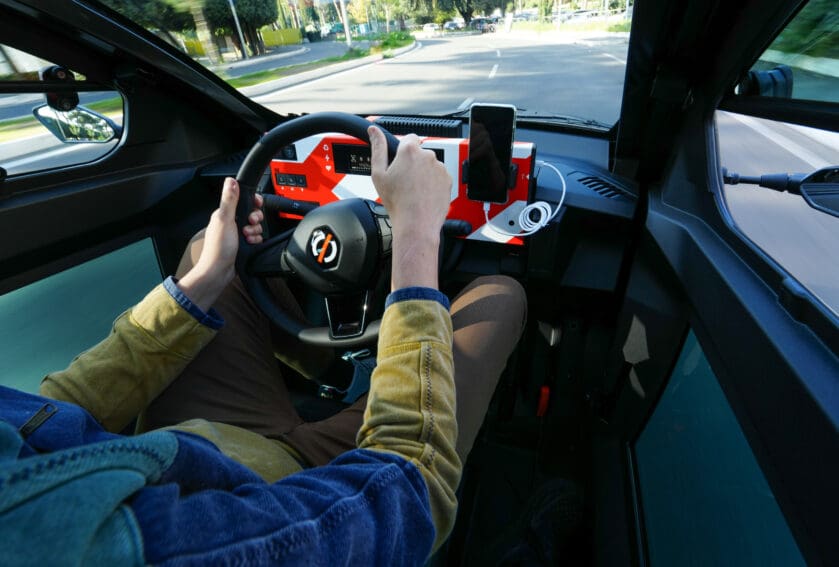
Mobilize Duo price and specification
The UK price for the Duo and Bento will be confirmed in spring 2025 but we’re told it’s ‘expected’ to be between £9,300 and £9,999. Which is quite precise for an ‘expectation’.
That means it’s around £2,000 to £3,000 more than the Citroen Ami. But it does get a much more powerful battery and motor, plus elements such as a driver’s airbag as standard (a first for the quadricycle segment).
It’s also cheaper than any other rival quadricycle despite offering pretty much the best range and performance in its class.
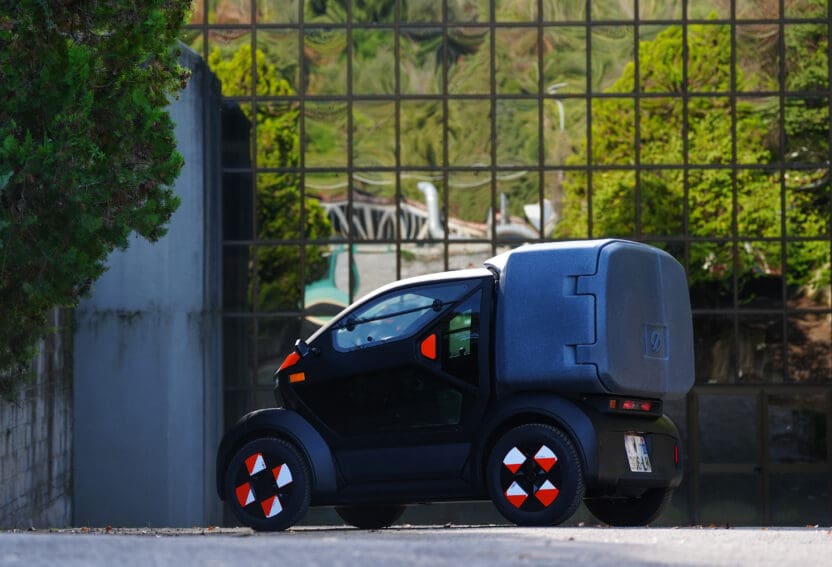
There are three versions coming to the UK, including the Bento commercial. The Duo 80 Evo is clearly aimed at private owners and comes with the ‘iconic orange’ colour pack, a Bluetooth connection kit, heated seat and windscreen, plus ‘comfort’ upholstery, as standard.
The 80 Pro version is aimed at fleets and shared-used applications. Creature comforts such as the heated seat and colourful elements become paid-for options rather than standard. In their place, it gets technology such as a shared entry, geofencing and battery charge inhibition that can be controlled by a central manager.
The Bento follows the same specification as the Pro, and both passenger versions and the Bento can also be specced up with air con, parking sensors and multiple other colour packs.
Verdict
As with the Ami, the private interest in the Duo is likely to be limited in the UK. Unlike Europe, where you can drive certain versions without a licence from the age of 14, in the UK, you still need a full driver’s licence.
However, with fewer affordable A segment cars on offer and growing pressure around everything from emissions to parking, a tiny electric runaround might make sense in some of our biggest, busiest cities.
And for businesses looking for a tax-friendly, low-cost vehicle for city use — either as a regular ‘car’ or a cargo van — a futuristic pod covered in branding isn’t a bad marketing move.
With that in mind, the Duo is in a strong position to become the go-to choice in that relatively niche segment. Its attention-grabbing design looks brilliant, and its size, pace and handling are ideally suited for city use, while still offering A-road speed should you need it.
Some rivals have more practical cabins, but the Duo counters with class-leading equipment levels, an unprecedented warranty and safety kit for what looks likely to be a seriously competitive price.
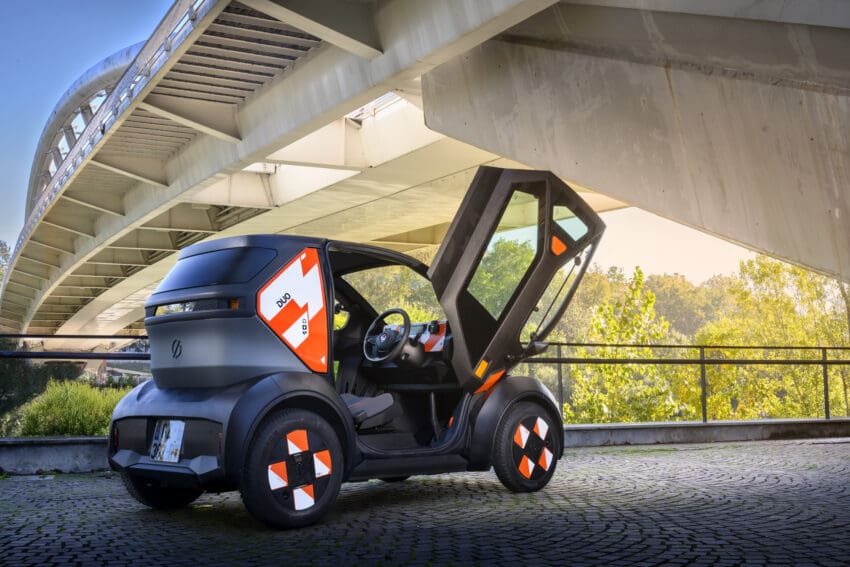
Mobilize Duo 80 Pro
- Price: £9,999 (est)
- Powertrain: single-motor, rear-wheel-drive
- Battery: 10.3kWh
- Power: 21bhp
- Torque: n/alb ft
- Top speed: 50mph
- 0-62mph: n/a seconds
- Range: 100 miles (WMTC)
- Consumption: 3.3m/kWh
- Charging: up to 7kW

